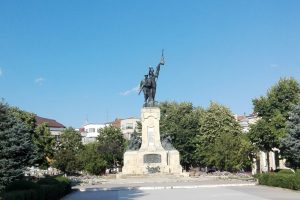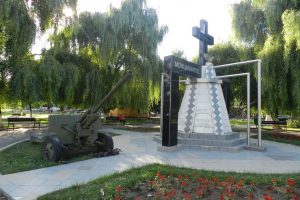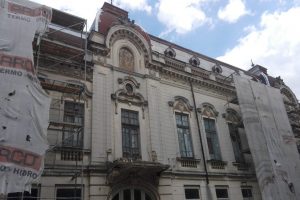

The Church of Holy Martyrs Brâncoveni was built during 1995 – 2012. The cornerstone was laid by Bishop Gerasimos of Râmnic on May 28, 1995.
The church project was conducted by Berbescu family. The works were executed on own, with financial support from local authorities and parishioners.
The painting was done in fresco by Prof. Dumitru Sorica from Bucharest. The consecration service was held on the 3rd of June 2012 and was officiated by Bishop of Slatina and Romanaţi.
Constantin Brancoveanu’s reign began under the sign of the emergence of the Bible in Romanian language in 1688. He assumed the role of protector of the printing and of schools in Muntenia, and also in Transylvania.
He gave the Bucharest a Royal New Academy, transforming the school from St. Sava in “public college for earthlings and foreigners” with a curriculum similar to institutions of higher grade. Has brought from Istanbul, Andrew future Metropolitan Anthimos of Iberia under whose guidance many books will be printed in Romanian, Greek, Slavic, Georgian and even Arabic. He founded several churches and monasteries, including: the churches from Potlogi and Mogoşoaia, the Monasteries from Hurezi and Brâncoveni, the Church “St. Gheorghe Nou “in Bucharest, where his holy relics rest.
For refusing to renounce the Christian faith, on August 15, 1714, right in day of his 60 years, the Romanian ruler was beheaded. His four sons along with counselor Ianache, suffered the same punishment.
Their bodies were thrown into the Bosphorus. They were taken out by some Christians and buried secretly in a convent of Halki, right next to Tarigrad.
In the summer of 1720 lady Maria (Marica) brought, in secret, the remains of the ruler and buried them within the church St. New George from Bucharest. She placed over the tomb a stone adorned with the emblem of the country, without any inscription and placed a silver lamp above. Starting, among others, from the inscription on this lamp (from June 12th, 1720), Virgil Drăghiceanu discovered in 1914 the ruler’s tomb.
On August 15th, 1992, Constantin Brancoveanu along with his sons and counselor Ianache were declared saints by the Romanian Orthodox Church.





